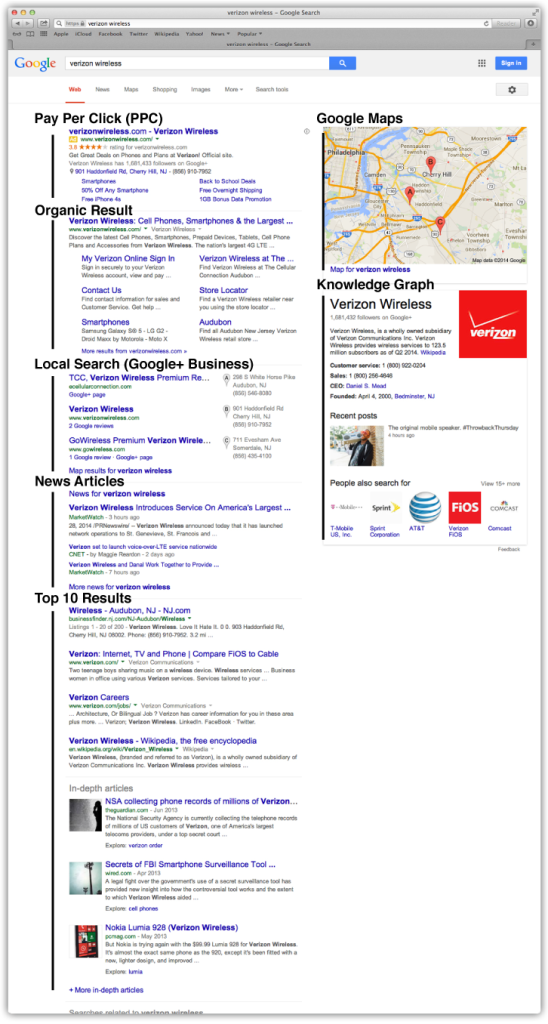The Anatomy of Google Search Results Pages
Did you know that Google search results have a specific anatomy? Most people don’t realize it because Google’s aim is to deliver content and informational resources to you without disrupting your search behavior, but when you take a look closely at a Google search results page, you will be able to see how the page is seperated into sections. These sections are important to understand when dominating search.
Pay Per Click
PPC is an Internet advertising model used to drive traffic to a website using strategic keywords. When the ad is clicked, the advertiser is charged. Only about 6% of people click on pay-per-click ads.
Organic Results
These are the listings on a search engine results page that appear because of their relevance to the search terms. Certain sites rank higher that others based on their site\’s content, information, relevance, clarity and more.
Local Search (Google+ Business):
When a user searches a geographical location, Google looks to Google+ business pages to deliver results. This is especially important for chain restaurants, franchises and more.
News Articles:
Google identifies certain posts or websites as news articles, so when a particular keyword is searched, it will categorize the results accordingly.
Top 10 Results:
In some cases, Google will only show a maximum of 10 organic listings on the first page of Google. This can vary depending on the search query and how many local listings show up.
Knowledge Graph:
According to Google, The Knowledge Graph is a knowledge base used by Google for the purpose of enhancing its search engine’s search results with semantic-search information. This information is curated from a variety of sources online such as wikipedia, corporate websites, blogs, education websites and government sites.

